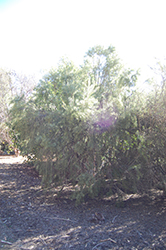Fri & Sat 8am - 8pm
Sun 8am - 7pm
Anytown, USA 12345
fax: 261.787.0463
e-mail: info@successgc.com


Plant Finder

Height: 20 feet
Spread: 15 feet
Sunlight:
![]()
Hardiness Zone: 9a
Other Names: Ebony guarri
Description:
A long lived, slow growing evergreen shrub or small tree with slender, drooping branches, covered with narrow, lanceolate leaves; small, greenish yellow flowers in late winter are subtle, but have a nice fragrance; black fruit on female plants
Ornamental Features
Cape Ebony is primarily valued in the landscape for its highly ornamental weeping form. It features subtle fragrant chartreuse bell-shaped flowers at the ends of the branches from late winter to early spring. It has green evergreen foliage. The small narrow leaves remain green throughout the winter.
Landscape Attributes
Cape Ebony is a dense multi-stemmed evergreen shrub with a rounded form and gracefully weeping branches. Its relatively fine texture sets it apart from other landscape plants with less refined foliage.
This is a relatively low maintenance shrub, and can be pruned at anytime. It is a good choice for attracting birds, bees and butterflies to your yard. It has no significant negative characteristics.
Cape Ebony is recommended for the following landscape applications;
- Mass Planting
- Hedges/Screening
- General Garden Use
- Windbreaks and Shelterbelts
- Naturalizing And Woodland Gardens
Planting & Growing
Cape Ebony will grow to be about 20 feet tall at maturity, with a spread of 15 feet. It has a low canopy, and is suitable for planting under power lines. It grows at a slow rate, and under ideal conditions can be expected to live for 80 years or more. This is a dioecious species, meaning that individual plants are either male or female. Only the females will produce fruit, and a male variety of the same species is required nearby as a pollinator.
This shrub should only be grown in full sunlight. It is very adaptable to both dry and moist growing conditions, but will not tolerate any standing water. It is considered to be drought-tolerant, and thus makes an ideal choice for xeriscaping or the moisture-conserving landscape. This plant will benefit from an application of bonemeal and/or mycorrhizal fertilizer at the time of planting. It is not particular as to soil type or pH. It is somewhat tolerant of urban pollution. This species is not originally from North America..
